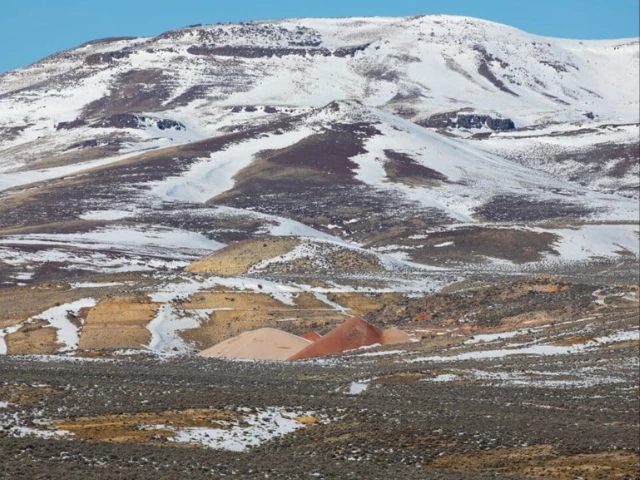US sets sights on $1.5 trillion lithium find in McDermitt Caldera's record deposit
Estimates suggest McDermitt Caldera could contain between 20 and 40 million metric tonnes of lithium.

A renewed geological assessment of the ancient McDermitt Caldera on the Oregon-Nevada border has confirmed the site holds what could be the largest known lithium deposit in the United States—potentially worth up to $1.5 trillion.
Although the caldera’s lithium-rich clays have been known for years, recent evaluations suggest the scale of the deposit is far greater than previously understood.
Experts say the find could help transform the US into a major player in the global battery supply chain.
The McDermitt Caldera was formed by a supervolcanic eruption 16.4 million years ago. The volcanic activity created a unique geological environment that concentrated vast amounts of lithium in claystone, particularly within lakebed sediments.
At the southern end of the caldera in Nevada, Lithium Americas is advancing the Thacker Pass project—set to begin extraction in 2026 with more than $2 billion in government loans and major investments from companies like General Motors.
On the Oregon side, Australia-based Jindalee Resources is exploring a similarly vast deposit, though no mine has yet been proposed. Officials and geologists suggest it could surpass other domestic sources in scale.
“This feature is 16 million years old, and we’re making decisions in a matter of years,” said Sammy Castonguay, a geologist at Treasure Valley Community College. “We need to understand what’s at stake.”
Geologists said that the McDermitt Caldera may contain 20 to 40 million metric tonnes of lithium in its mineral-rich clay deposits, according to a BusinessInsider report.
This would rank it as one of the largest (if not the largest) lithium reserves ever identified.
For comparison, Bolivia’s famed Salar de Uyuni salt flats (formerly the world’s largest known lithium source) hold an estimated 21–23 million tonnes of lithium, and Argentina’s extensive lithium reserves are roughly 20 million tonnes.
McDermitt’s upper-end estimate (40 Mt) is nearly double Bolivia’s resource base, signaling a potentially record-setting find.
These updated figures far exceed earlier projections for the McDermitt deposit. Previous assessments had pegged US lithium finds at around 18 million tonnes, meaning the caldera’s new estimate marks a substantial upward revision.
In practical terms, this single volcanic crater could dwarf other known deposits and significantly boost US lithium resources, a critical factor for battery production and clean energy supply chains.
Recent geological studies and industry reports have highlighted the McDermitt Caldera’s immense lithium potential, underscoring its significance relative to South America’s major lithium reserves.
The finding positions the United States as a potentially dominant player in lithium supply, with McDermitt’s resource estimate significantly higher than previously thought.
With battery-grade lithium carbonate prices averaging around $37,000 per metric ton in recent market assessments, this means the Nevada deposit’s value could soar upwards of $1.5 trillion
With global lithium demand expected to rise 40-fold by 2040, according to the International Energy Agency, the McDermitt site is being seen as a potential game-changer.
However, extracting lithium from claystone poses technical and environmental challenges. Unlike salt brine operations, the lithium here is embedded in illite, requiring new chemical leaching technologies. Researchers are working on closed-loop systems to minimise water usage and reduce environmental harm.
Local communities remain divided. Malheur County, Oregon’s poorest, could benefit from jobs and infrastructure. But past mining in the region left toxic scars—visible in abandoned mercury waste piles.
Meanwhile, Indigenous tribes and environmental groups have raised concerns about Thacker Pass’s impact on sacred land, water resources, and wildlife habitats.
“The US can’t afford to repeat past mistakes,” said Greg Smith, director of economic development in Malheur County. “We need to do this the Oregon way—with full accountability and shared benefits.”
As the US moves to strengthen its domestic lithium supply under the Inflation Reduction Act and reduce reliance on foreign sources, the McDermitt Caldera is drawing national and global attention. The question now is how, and if, the country will responsibly unlock its vast potential.























COMMENTS (8)
Comments are moderated and generally will be posted if they are on-topic and not abusive.
For more information, please see our Comments FAQ